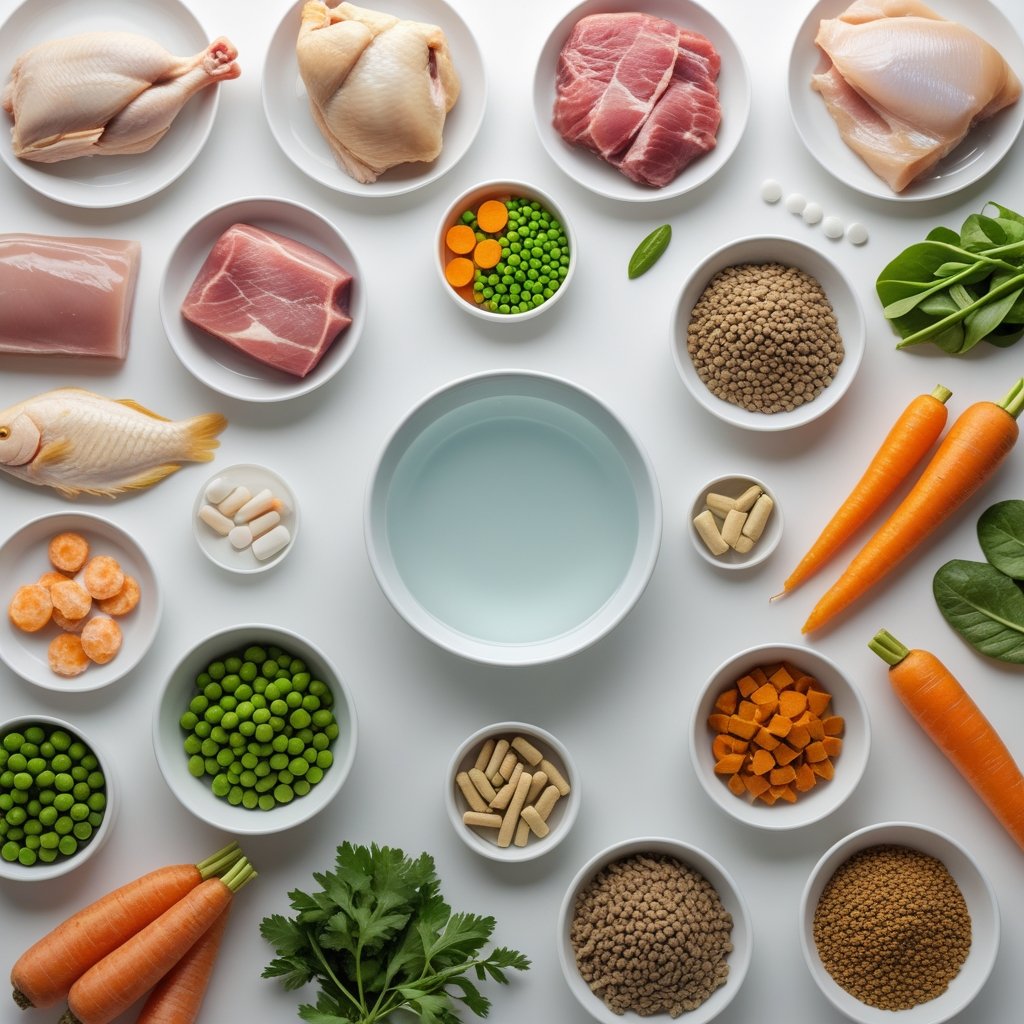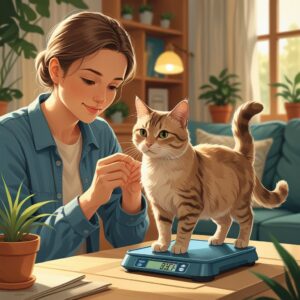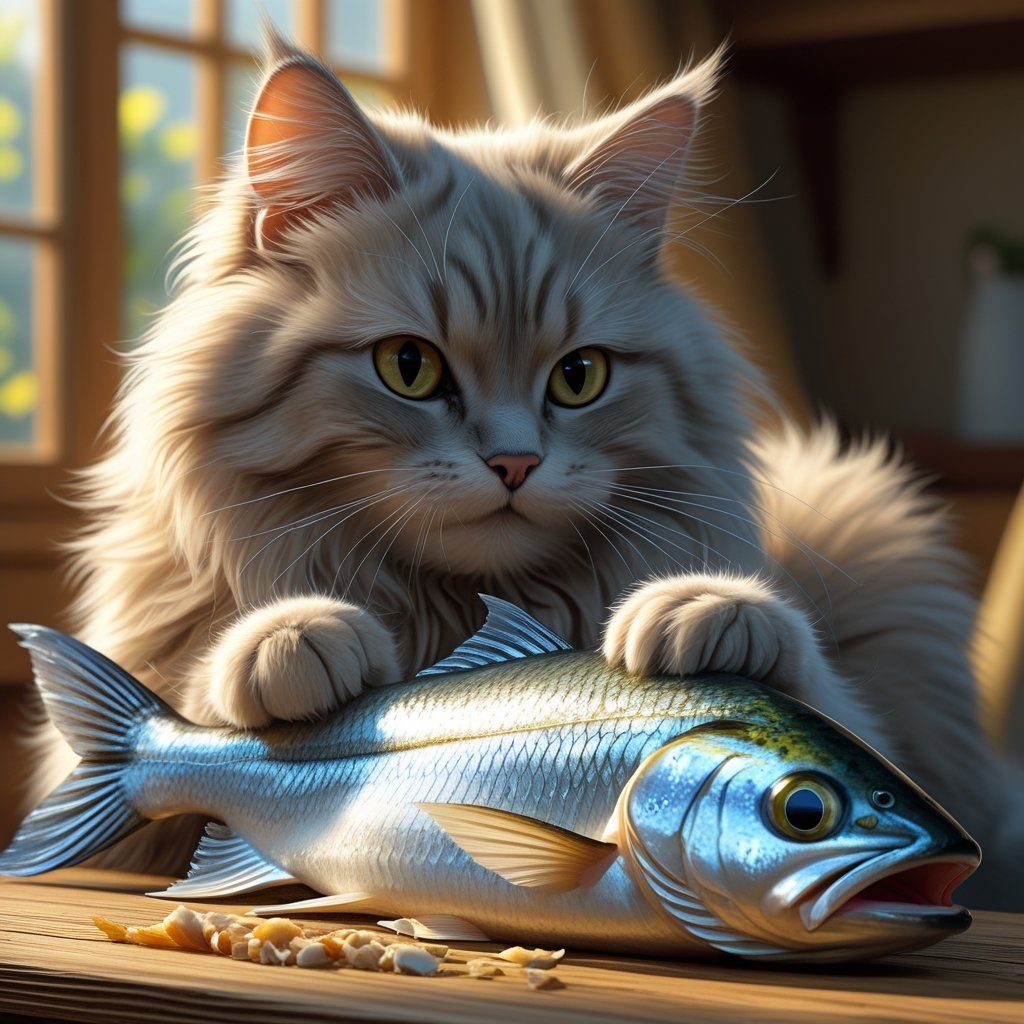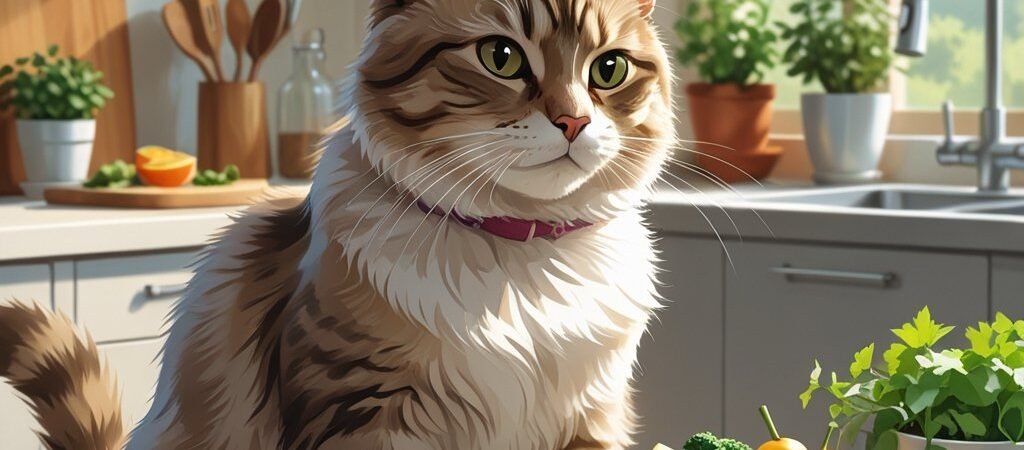Meta Description: Discover the best cat foods for optimal health! Learn about nutritional requirements, ingredient quality, feeding guidelines, and how to choose the perfect diet for your feline friend.
Choosing the right food for your cat is one of the most important decisions you’ll make as a pet parent. With countless brands, formulations, and marketing claims filling pet store aisles, finding truly nutritious cat food that supports optimal health can feel overwhelming. Yet proper nutrition forms the foundation of your cat’s wellbeing, affecting everything from their energy levels and coat quality to their long-term health and lifespan.
Cats have unique nutritional requirements that differ significantly from dogs and humans. As obligate carnivores, they’ve evolved to thrive on diets rich in animal protein, with specific needs for nutrients like taurine, arachidonic acid, and vitamin A that can only be obtained from animal sources. Understanding these requirements, along with how to evaluate food quality and choose appropriate formulations for different life stages, empowers you to make informed decisions about your cat’s nutrition.
In this comprehensive guide, we’ll explore the science behind optimal feline nutrition, decode ingredient lists, compare feeding methods, and provide practical advice for selecting the best foods to keep your cat healthy, happy, and thriving throughout their life.

Understanding Feline Nutritional Requirements
Before diving into specific food recommendations, it’s crucial to understand what makes cats nutritionally unique and why their dietary needs differ from other pets.
Obligate Carnivore Status
Unlike dogs, who are omnivores capable of deriving nutrition from plant and animal sources, cats are obligate carnivores. This means they have evolved to require nutrients found exclusively in animal tissue and cannot synthesize certain essential compounds from plant sources alone.
Essential Animal-Derived Nutrients:
- Taurine: Critical for heart function, vision, and reproduction
- Arachidonic Acid: An essential fatty acid found only in animal fat
- Vitamin A: Cats cannot convert beta-carotene from plants into usable vitamin A
- Niacin: Must be obtained from animal tissue as cats cannot produce adequate amounts
Macronutrient Requirements
Protein (minimum 26% dry matter for adults): Cats require significantly more protein than dogs, needing high-quality animal proteins containing complete amino acid profiles. Protein supports muscle maintenance, immune function, and overall metabolic processes.
Fat (minimum 9% dry matter): Essential fatty acids from animal sources provide energy, support skin and coat health, and enable absorption of fat-soluble vitamins.
Carbohydrates (no minimum requirement): While cats can utilize carbohydrates for energy, they have no biological requirement for them. Excessive carbohydrates may contribute to obesity and diabetes risk.
Micronutrient Needs
B Vitamins: Higher requirements than most animals, particularly for thiamine, niacin, and B12 Minerals: Balanced calcium and phosphorus ratios, adequate magnesium levels, controlled sodium Water: High moisture needs due to low thirst drive inherited from desert ancestors

Evaluating Cat Food Quality: Reading Between the Lines
Understanding how to assess cat food quality helps you make informed choices among the thousands of available options.
Ingredient List Interpretation
First Five Ingredients: These comprise the majority of the food’s content and should primarily consist of named animal proteins (chicken, salmon, turkey) rather than generic terms like “meat” or “poultry.”
Protein Sources: Look for specific, named proteins (deboned chicken, salmon meal, turkey meal) rather than vague terms. “Meals” are concentrated protein sources with moisture removed and can be excellent protein sources when properly identified.
Carbohydrate Sources: While not required, if present, choose whole food sources like sweet potatoes, peas, or brown rice over corn, wheat, or soy, which provide less nutritional value and may trigger food sensitivities.
Preservatives: Natural preservatives like mixed tocopherols (vitamin E) and ascorbic acid (vitamin C) are preferable to chemical preservatives like BHA, BHT, or ethoxyquin.
Guaranteed Analysis Understanding
Crude Protein: Minimum percentage, but higher quality matters more than higher quantity Crude Fat: Should align with your cat’s activity level and health status Crude Fiber: Lower levels (under 4%) are generally better for cats Moisture: Wet foods typically contain 75-85% moisture, while dry foods contain 10-12%
Avoiding Problematic Ingredients
Excessive Fillers: Corn gluten meal, wheat gluten, and soy can provide protein numbers without nutritional quality Artificial Colors and Flavors: Unnecessary additives that don’t benefit cats Excessive Carbohydrates: Foods with carbohydrates as primary ingredients may not align with feline nutritional needs
Life Stage Nutrition: Feeding for Every Phase
Cats have different nutritional requirements throughout their lives, making life stage-appropriate feeding essential for optimal health.
Kitten Nutrition (0-12 months)

Higher Caloric Density: Growing kittens need approximately twice the calories per pound as adult cats to support rapid growth and development.
Increased Protein Requirements: Minimum 30% protein (dry matter basis) to support muscle and tissue development.
Frequent Feeding: 3-4 meals daily until 6 months, then transition to 2-3 meals daily.
Key Nutrients: Enhanced levels of DHA for brain and eye development, higher fat content for energy, and increased vitamins and minerals.
Recommended Feeding Duration: Feed kitten food until 12 months of age, or until spaying/neutering for some cats.
Adult Cat Nutrition (1-7 years)
Maintenance Requirements: Balanced nutrition to maintain ideal body weight and support daily activities.
Activity-Based Adjustments: Indoor cats may need fewer calories than outdoor cats, while active cats may require more.
Quality Over Quantity: Focus on high-quality protein sources and balanced nutrition rather than simply high-calorie foods.
Preventive Nutrition: Choose foods that support long-term health, including urinary tract health, dental health, and weight management.
Senior Cat Nutrition (7+ years)
Easily Digestible Proteins: High-quality, easily absorbed proteins to maintain muscle mass as metabolism changes.
Joint Support: Foods enriched with omega-3 fatty acids and glucosamine may benefit aging joints.
Palatability Enhancement: Senior cats may have decreased appetite, making highly palatable foods important for maintaining nutrition.
Health-Specific Formulations: Many senior cats benefit from foods designed to support kidney health, heart health, or other age-related concerns.
Wet vs. Dry Food: Making the Right Choice
The wet versus dry food debate involves multiple factors affecting your cat’s health, convenience, and individual preferences.
Benefits of Wet Food
Superior Hydration: Contains 75-85% moisture, helping cats meet their daily water requirements and supporting kidney and urinary tract health.
Higher Protein Content: Typically contains more animal protein and fewer carbohydrates than dry food.
Better Satiety: The higher moisture content helps cats feel full with fewer calories, supporting weight management.
Palatability: Most cats find wet food more appealing due to stronger aromas and varied textures.
Dental Considerations: While not providing mechanical cleaning like dry food, wet food doesn’t stick to teeth like some dry foods can.
Benefits of Dry Food
Convenience: Longer shelf life, easier storage, and can be left out for extended periods without spoiling.
Cost-Effectiveness: Generally less expensive per serving than wet food.
Dental Benefits: Some dry foods provide mechanical cleaning action, though this benefit is often overstated.
Portion Control: Easier to measure precise portions for cats requiring strict calorie management.
The Combination Approach
Many veterinarians and feline nutritionists recommend feeding both wet and dry food to capture the benefits of each:
- Primary wet food feeding for hydration and nutrition
- Small amounts of high-quality dry food for convenience and variety
- Balanced daily calories between both food types
Special Dietary Considerations

Certain cats require specialized nutrition based on health conditions, sensitivities, or unique needs.
Food Allergies and Sensitivities
Common Allergens: Chicken, beef, fish, dairy, and grains are frequent culprits in feline food sensitivities.
Limited Ingredient Diets: Foods with single protein sources and minimal ingredients help identify and avoid trigger ingredients.
Novel Protein Sources: Duck, venison, rabbit, or kangaroo may benefit cats with multiple food sensitivities.
Hydrolyzed Protein Diets: Prescription foods with broken-down proteins that are less likely to trigger immune responses.
Weight Management

Reduced Calorie Formulations: Foods designed to provide complete nutrition while reducing caloric density for weight loss.
High Protein, Low Carbohydrate: Helps maintain muscle mass during weight loss and provides better satiety.
Portion Control Tools: Pre-portioned foods or feeding guidelines that support gradual, healthy weight loss.
Urinary Health Support
Controlled Mineral Levels: Balanced magnesium, phosphorus, and calcium to prevent urinary crystal formation.
pH Balance: Foods formulated to maintain optimal urine pH (6.0-6.5) for urinary tract health.
Increased Moisture: Wet foods or foods with added water to promote dilute urine and frequent urination.
Digestive Health
Easily Digestible Proteins: High-quality, easily absorbed protein sources for cats with sensitive stomachs.
Prebiotic and Probiotic Support: Ingredients that support healthy gut bacteria and digestive function.
Fiber Balance: Appropriate fiber levels to support digestive health without causing irritation.
Premium vs. Budget Foods: Understanding Value

The pet food market spans from budget-friendly options to ultra-premium formulations, with significant differences in quality, ingredients, and nutritional value.
Indicators of Premium Quality
Named Animal Proteins: Specific protein sources (salmon, chicken, turkey) rather than generic terms Higher Protein Percentages: Premium foods typically contain 40-50% protein or more Limited Fillers: Minimal use of corn, wheat, soy, or other low-quality fillers Added Functional Ingredients: Omega-3 fatty acids, probiotics, antioxidants, and other health-supporting compounds
Budget Food Considerations
Cost vs. Value: Cheaper foods often require larger portion sizes, potentially offsetting initial cost savings Ingredient Quality: May rely more heavily on plant proteins and fillers to meet nutritional minimums Digestibility: Lower-quality ingredients may result in poor nutrient absorption and larger stool volumes
Finding Middle Ground
Value-Oriented Premium Foods: Many companies offer high-quality nutrition at moderate prices Store Brand Options: Some retailer brands provide good quality at competitive prices Cost Per Serving Analysis: Calculate actual feeding costs rather than just package prices
Feeding Guidelines and Best Practices
Proper feeding practices are just as important as food quality in maintaining your cat’s optimal health.
Portion Control Principles
Body Condition Scoring: Use visual and hands-on assessment rather than just weight to determine appropriate portions Caloric Requirements: Most adult cats need 20-30 calories per pound of ideal body weight daily Individual Variations: Activity level, age, health status, and metabolism affect individual needs
Feeding Schedule Options
Scheduled Feeding: 2-3 measured meals daily provides better portion control and monitoring opportunities Free-Choice Feeding: Leaving dry food available constantly may work for some cats but can lead to overeating Combination Approach: Scheduled wet food meals with controlled access to dry food
Transition Guidelines
Gradual Changes: Introduce new foods over 7-10 days, gradually increasing the new food while decreasing the old Monitoring During Transitions: Watch for digestive upset, appetite changes, or other concerns Patience with Picky Eaters: Some cats require longer transition periods or multiple attempts with new foods
Common Feeding Mistakes to Avoid
Understanding frequent feeding errors helps prevent nutritional problems and promotes better health outcomes.
Overfeeding and Portion Distortion
Manufacturer Guidelines: Feeding recommendations are starting points and may need adjustment based on individual cats Treat Overindulgence: Treats should comprise no more than 10% of daily calories Multiple Feeders: Ensure all family members understand feeding protocols to prevent overfeeding
Inadequate Hydration Support
Water Bowl Maintenance: Fresh, clean water should always be available Food-Related Hydration: Wet food significantly contributes to daily water intake Location Considerations: Multiple water sources throughout the house encourage drinking
Ignoring Individual Needs
One-Size-Fits-All Approach: Different cats may thrive on different foods even within the same household Life Stage Mismatching: Feeding kitten food to adults or adult food to seniors may not meet nutritional needs Health Status Changes: Cats with developing health issues may benefit from diet modifications
Signs of Optimal Nutrition
Recognizing indicators of good nutrition helps confirm that your chosen food supports your cat’s health effectively.
Physical Indicators
Healthy Coat: Shiny, soft fur without excessive shedding, dandruff, or dullness Appropriate Body Weight: Ideal body condition with easily felt ribs and visible waist Good Energy Levels: Alert, playful behavior appropriate for age and personality Normal Elimination: Well-formed stools without excessive odor, constipation, or diarrhea
Behavioral Signs
Healthy Appetite: Consistent interest in food without begging or food obsession Normal Activity: Appropriate energy levels for age and breed characteristics Good Sleep Patterns: Regular sleep cycles without excessive lethargy Social Engagement: Normal interaction with family members and environment
Frequently Asked Questions About Cat Nutrition
Q: How often should I change my cat’s food?
A: Healthy adult cats don’t need frequent food changes unless there are health, palatability, or availability issues. However, rotating between 2-3 high-quality foods can provide nutritional variety and prevent food aversions.
Q: Are grain-free diets better for cats?
A: Cats have no biological requirement for grains, but grain-free doesn’t automatically mean better. Focus on high-quality animal proteins rather than grain presence/absence, as some grain-free foods substitute with high levels of other carbohydrates.
Q: Should I feed my cat a raw diet?
A: Raw diets can provide excellent nutrition when properly formulated and handled, but they require careful preparation, pathogen management, and nutritional balancing. Consult with a veterinary nutritionist before transitioning to raw feeding.
Q: How do I know if my cat food is causing health problems?
A: Signs include digestive upset, skin issues, excessive scratching, changes in coat quality, energy level changes, or urinary problems. If you suspect food-related issues, consult your veterinarian for proper evaluation.
Q: Is it okay to feed the same food to multiple cats with different needs?
A: While many high-quality all-life-stage foods work for multiple cats, individual needs may require different approaches. Cats with health conditions, significant age differences, or special requirements may benefit from separate feeding strategies.
Conclusion: Investing in Your Cat’s Health Through Nutrition
Choosing the best cat food for optimal health represents one of the most important investments you can make in your feline companion’s wellbeing and longevity. While the abundance of options can seem overwhelming, understanding your cat’s unique nutritional requirements, learning to evaluate food quality, and considering individual needs creates a framework for making informed decisions.
Remember that the “best” cat food is the one that meets your individual cat’s nutritional requirements, supports their health goals, fits your budget, and appeals to their preferences. What works perfectly for one cat may not suit another, making observation, patience, and sometimes experimentation necessary parts of the process.
High-quality nutrition forms the foundation for virtually every aspect of your cat’s health, from maintaining ideal body weight and supporting immune function to promoting healthy aging and disease prevention. The time and effort invested in selecting appropriate foods pays dividends through improved quality of life, reduced veterinary costs, and the joy of sharing life with a healthy, vibrant feline companion.
Work closely with your veterinarian to develop a nutrition plan that evolves with your cat’s changing needs throughout their life. Regular monitoring, periodic reassessment, and willingness to adjust feeding strategies ensure that your nutritional choices continue supporting optimal health for years to come.
Your cat depends on you to make informed choices about their nutrition. By applying the principles outlined in this guide and remaining attentive to your cat’s individual responses, you’re providing the nutritional foundation for a long, healthy, and happy life together.
What feeding strategies have worked best for your cat? Share your nutrition success stories and questions in the comments below!
Ready to optimize your cat’s nutrition? Check out our recommendations for high-quality cat foods, feeding accessories, and portion control tools that make providing excellent nutrition easier and more effective.
Related Articles You Might Enjoy:
- “How to Tell if Your Cat is Overweight (and What to Do)”
- “Do Cats Dream? The Sleep Habits of Felines”
- “Top 10 Friendliest Cat Breeds for Families”
- “Why Cats Love Boxes (and How to Use This to Enrich Their Lives)”
Keywords: best cat food, cat nutrition, healthy cat food, cat diet, feline nutrition, premium cat food, cat food ingredients, feeding cats, optimal cat health, cat food guide

